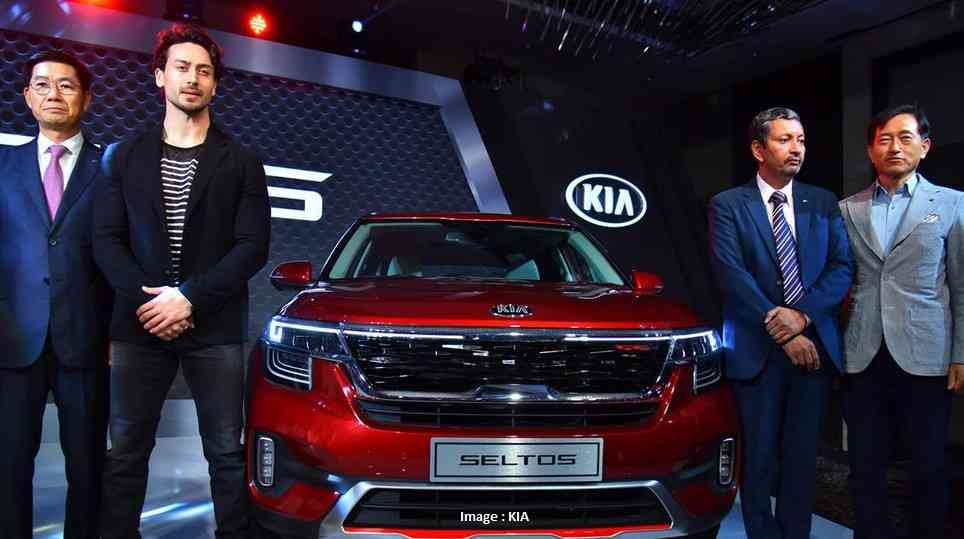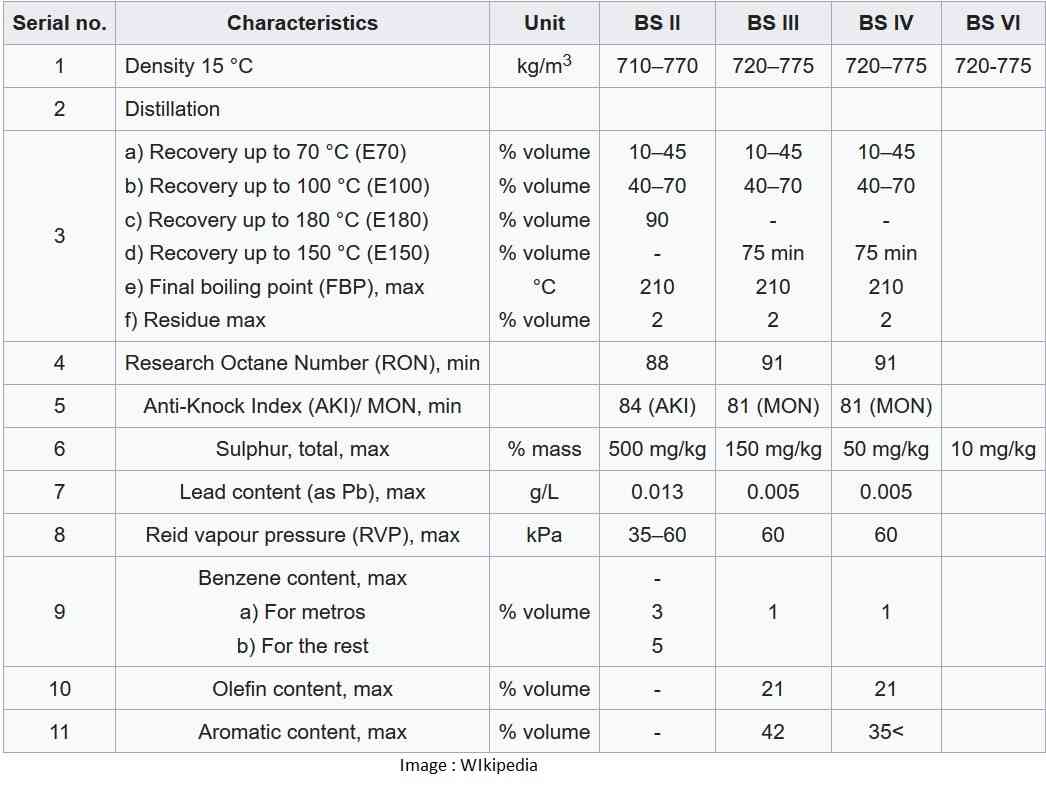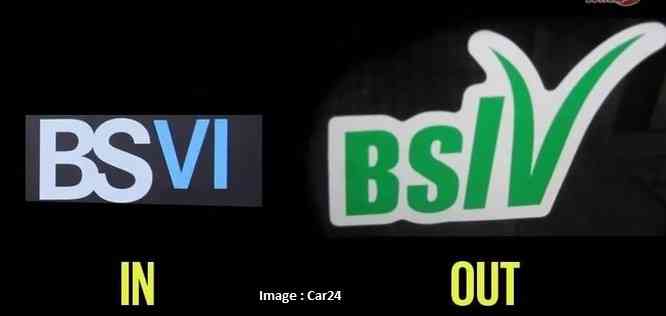For Feedbacks | Enquiries | Questions | Comments - Contact us @ innovationmerge@gmail.com
What?
- Bharat stage emission standards BSES are emission standards instituted by the Government of India to regulate the output of air pollutants from compression ignition engines and Spark-ignition engines equipment, including motor vehicles.
- The standards and the timeline for implementation are set by the Central Pollution Control Board under the Ministry of Environment, Forest and Climate Change
Why?
- The standards, based on European regulations were first introduced in 2000. Progressively stringent norms have been rolled out since then. All new vehicles manufactured after the implementation of the norms have to be compliant with the regulations. Since October 2010, Bharat Stage (BS) III norms have been enforced across the country.
- In 13 major cities, Bharat Stage IV emission norms have been in place since April 2010 and it has been enforced for entire country since April 2017. In 2016, the Indian government announced that the country would skip the BS V norms altogether and adopt BS VI norms by 2020.
- In its recent judgment, the Supreme Court has banned the sale and registration of motor vehicles conforming to the emission standard Bharat Stage IV in the entire country from 1 April 2020.
- On 15 November 2017, the Petroleum Ministry of India, in consultation with public oil marketing companies, decided to bring forward the date of BS VI grade auto fuels in NCT of Delhi with effect from 1 April 2018 instead of 1 April 2020.
- In fact, Petroleum Ministry OMCs were asked to examine the possibility of introduction of BS VI auto fuels in the whole of NCR area from 1 April 2019.
- This huge step was taken due the heavy problem of air pollution faced by Delhi which became worse around 2019. The decision was met with disarray by the automobile companies as they had planned the development according to roadmap for 2020.
For?
- [x]The phasing out of 2-stroke engine for two wheelers, the cessation of production of the Maruti 800, and the introduction of electronic controls have been due to the regulations related to vehicular emissions.
- [x]While the norms help in bringing down pollution levels, it invariably results in increased vehicle cost due to the improved technology and higher fuel prices.
- [x]However, this increase in private cost is offset by savings in health costs for the public, as there is a lesser amount of disease-causing particulate matter and pollution in the air.
- [x]Exposure to air pollution can lead to respiratory and cardiovascular diseases, which is estimated to be the cause for 620,000 early deaths in 2010, and the health cost of air pollution in India has been assessed at 3% of its GDP.
History So far
- [x]The first emission norms were introduced in India in 1991 for petroleum distillate, and 1992 for diesel vehicles. These were followed by making the Catalytic converter mandatory for petrol vehicles and the introduction of unleaded petrol in the market.
- [x]On 29 April 1999, the Supreme Court of India ruled that all vehicles in India have to meet Euro I or India 2000 norms by 1 June 1999 and Euro II will be imperative in the NCR by 1 April 2000. Car makers were not prepared for this transition and in a subsequent judgement the implementation date for Euro II was not enforced.
- [x]In 2002, the Indian government accepted the report submitted by the Mashelkar committee. The committee proposed a road map for the roll-out of Euro based emission norms for India. It also recommended a phased implementation of future norms with the regulations being implemented in major cities first and extended to the rest of the country after a few years.
- [x]Based on the recommendations of the committee, the National Auto Fuel policy was announced officially in 2003. The road-map for implementation of the Bharat stage norms were laid out until 2010. The policy also created guidelines for auto fuels, reduction of pollution from older vehicles and R&D for air quality data creation and health administration
The motor Vehicles
- To regulate the pollution emitted by cars and two-wheelers, the government of Asian nation has placed forth regulations known as Bharat Stage Emission Standards (BSES).
- The Central government has mandated that every vehicle manufacturer, each two-wheels and four-wheels, ought to manufacture, sell and register solely BS6 (BSVI) vehicles from 1 April 2020.
- Both BSIV and BSVI area unit emission norms that set the most permissible levels for pollutants emitting from a automotive or a two-wheeler exhaust.
- Compared to the BS4, BS6 emission standards area unit stricter, whereas makers use this variation to update their vehicles with new options and safety standards, the largest or the numerous modification comes within the type of stricter permissible emission norms.
- The below table offers Associate in Nursing insight into the modification within the permissible emission levels of BS6 vehicles compared to BS4 vehicles.
- The below table offers Associate in Nursing insight into the modification within the permissible emission levels of BS6 vehicles compared to BS4 vehicles:

Confused by the SC’s BS6 ruling?
- However, it wasn’t until BS4 was implemented that emission levels were capped at levels comparable to global standards. In 2016, the government decided to skip BS5 in favour of devising a more stringent standard to check rising pollution from vehicular exhausts. After much deliberation and extensions, it was decided that the final deadline for the implementation of BS6 norms would be April 2020.
- The new emission standard will require both automobile manufacturers as well as oil marketing companies to tweak their respective products. For optimal results, BS6-compliant engines will have to run on BS6 fuel, as new-generation engines running on lower quality fuel will emit a quantum of toxic gases comparable to that generated by BS4 engines.
- Moreover, running BS6-compliant vehicles on BS4 fuel could be detrimental to their engines. Indian oil companies have already established a supply chain for BS6-grade petrol and diesel, with distribution expanded to most filling stations in New Delhi and other metro cities.
- The auto industry, which is witnessing a slowdown, has to do away with its stock of BS4 vehicles before the Supreme Court-mandated deadline of April 2020.
- Many manufacturers have indulged in heavy discounting, while simultaneously investing in building BS6 fuel compatible engines. Analysts predict the prices to increase by 10 per cent, with carmakers passing on higher manufacturing costs to customers.
How will it affect customers?
- With BS6 fuel already available in many cities, owners of older generation cars can opt for it at filling stations. This can produce mixed results. There is a direct correlation between a fuel’s Sulphur content and its emission level – lower Sulphur content translates into cleaner combustion.
- Petrol, which has lower Sulphur content, emits less carbon monoxide, NOx and other toxic hydrocarbons. BS6 diesels will release less particulate matter (PM) upon combustion. Studies suggest that a BS4 compliant diesel vehicle running on BS6 fuel could cut down PM emissions in half.
Can BS4 cars run on BS6 fuel?
- Users of petrol cars have little to worry about compliance as there is very little difference between BS4 and BS6 fuels. However, the same isn’t the case with diesel vehicles. The older generation BS4 diesel has five times the sulphur content (50ppm) as compared to BS6 (10ppm).
- A diesel engine employs an injector to ionize fuel for combustion. Sulphur acts as a lubricant for diesel injectors. The use of BS6 diesel in older generation BS4 cars will cause the injector to wear out prematurely as low sulphur in the fuel will lead to less lubrication.
How do BS6 diesel engines work?
- The SCR unit reduces NOx by converting it into two harmless products – nitrogen and water vapour. SCR, which is housed in BS6 diesel engines, uses AdBlue or diesel exhaust fluid to minimize NOx emissions. AdBlue is roughly composed of two parts de-ionized water and one part urea.
- When AdBlue comes in contact with exhaust gases formed as a result of combustion, the urea gets converted to carbon dioxide and ammonia. The ammonia, produced under the influence of catalysts in the SCR core, converts NOx into water vapour and nitrogen.
Overview of Emission norms in India.
- [x]1991 – Idle CO limits for petrol vehicles and free acceleration smoke for diesel vehicles, mass emission norms for petrol vehicles.
- [x]1992 – Mass emission norms for diesel vehicles.
- [x]1996 – Revision of mass emission norms for petrol and diesel vehicles, mandatory fitment of catalytic converter for cars in metros on unleaded petrol.
- [x]1998 – Cold start norms introduced.
- [x]2000 – India 2000 (equivalent to Euro I) norms, modified IDC (Indian driving cycle), Bharat Stage II norms for Delhi.
- [x]2001 – Bharat Stage II (equivalent to Euro II) norms for all metros, emission norms for CNG and LPG vehicles.
- [x]2003 – Bharat Stage II (equivalent to Euro II) norms for 13 major cities.
- [x]2005 – From 1 April, Bharat Stage IV (equivalent to Euro IV citation needed norms for 13 major cities.
- [x]2010 – Bharat Stage IV emission norms for 2-wheeler, 3-wheeler and 4-wheeler for the entire country, whereas Bharat Stage IV (equivalent to Euro IV) for 13 major cities for only 4-wheeler. Bharat Stage IV also has norms on OBD (similar to Euro III but diluted).
- [x]2017 – Bharat Stage IV norms for all vehicles.
- [x]2018 - Bharat Stage VI fuel norms from 1 April 2018 in Delhi instead of 2020.
- [x]2020 – Bharat Stage VI fuel norms from 1 April 2020 nationwide switching India to world’s cleanest diesel and petrol



